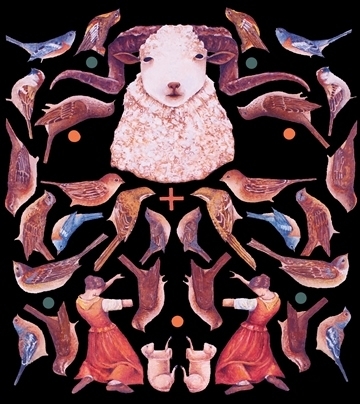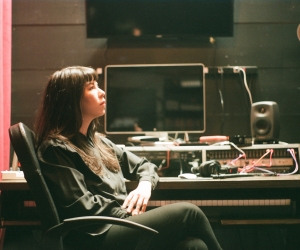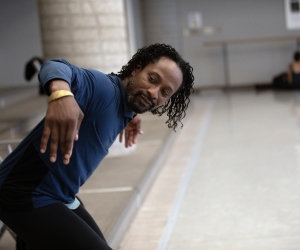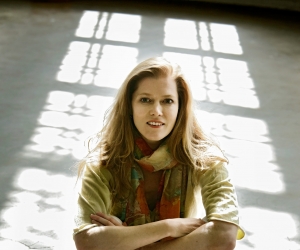
The word caduc translates from French as both obsolete and deciduous. Appropriately, the roster of Mathieu Ruhlmann’s humble Vancouver imprint, Caduc, plays right at the intersection of the organic world and senescent technology.
Since late 2011, Caduc has built a catalogue of improvised and intuitively constructed music whose sonic fibre is audible, and often quite delicate. For Ruhlmann, whose own musical voice figures into the majority of the label’s releases to date, the subtle yet palpable physicality of the music amounts to more than just a sonic preoccupation. It is one facet of a larger commentary—albeit an open-ended and slightly playful one—on his perception of a general lack of interest in physical and material objects, such as the much-touted rejection of physical formats (books, CDs, etc.), although he sees it as going much beyond that.
Instead of following the trend of offering downloadable MP3s, Caduc releases lavishly packaged physical albums.
And meanwhile, many of the artists affiliated with the label are bringing listeners into intimate proximity with the properties of discarded, neglected, found, or repurposed sounding bodies—instrumental and otherwise.
This overarching idea, not some premeditated notion of musical genre, governs the curatorial ethos of Caduc. It may be convenient to lump the imprint in with the so-called lowercase and reductionist camps, but its discography clearly articulates Ruhlmann’s intentions, as opposed to some facile categorization.
“Scientifically speaking, when you make a sound, that sound never disappears,” Ruhlmann says. “Any sound that you make, any sound that’s created, is always there—it’s just dissipating into smaller and smaller sounds until it’s inaudible. I work a lot with hydrophones, contact mikes, and electromagnetic pickups in an effort to capture these hidden sounds that we can’t hear, but which are there nonetheless.
“I've always been intrigued by how history forms a sound. The ukelin that I frequently improvise with was made around1929; it’s cracked, it’s warped, it’s second-hand. But because of those events in its history it resonates differently, and that’s what I love. When I present work, I’m interested in the discovery of that history. I try and hold my self back, in order to let it speak.”
Chicago’s Coppice (Noé Cuéllar and Joseph Kramer) had strong prior releases on labels such as Notice Recordings, Triple Bath, and Quakebasket before bringing its work to Caduc. On Vantage/Cordoned (CA03) the duo delights in ever-expanding columns of free-reed drones, refried boombox chatter (the tape machines serve to record and process sound), and the sounds of other peculiar gadgets, all of which produce a visceral yet somehow understated web of sustained pitches and textural detail. While the music is rich and highly abstract, the listener is never far removed from air current passing through the reeds and bellows of their instruments.
A forthcoming release from Montreal electroacoustic composer Christopher Strickland is a deeply mysterious affair consisting of an assortment of distant hums punctuated variously by the whisperings of metallic objects, vocal noises, and sudden, rapidly vanishing bursts of computer-garbled field recordings. The forty-three-minute piece that sits at the middle of the album constantly navigates disparate scenery and densities without falling apart, instead luring the listener into a dream-like state.
On Is Music Invisible? (CA02), Kiiln (Ruhlmann’s duo with Lance Austin Olsen) also lays opaque howls, disembodied voices, robust vibrations, sundry wet and dry percolations, and fluorescent rays of sound on unfurling, soft, static surfaces. While the sounds are of mixed origin, their nearness and uniformity situates them, perhaps deceptively, within a single acoustical context. The listener confronts a large spectrum of powerful sonic images, yet in a sense, they seem flattened into the more two-dimensional space of instrumental music, rather than existing in the more cinematic world of electroacoustics. Listening becomes a constant friction between vivid imagined realities and the more mundane space of “two musicians playing” music. Your ears can’t quite tell where they are, and this disorientation serves as a macro-level complement to the other, more material friction found within the duo’s various sounds.
Concert for Charles Cros (CA04) features the pair alongside Joda Clément, who improvises to recorded materials provided by Daniel Jones. D.O.R (Jamie Drouin, Olsen, Ruhlmann) share this same peculiar duality on An Occupied House (CA01), on the one hand offering the warmth of instrumentalists’ presences, on the other, presenting what appears to be a shifting abstract landscape—quite apart from human intervention.
It’s tempting to regard the practices documented by Caduc as conceptual, or even ascetic. Still, although there is a certain restraint and quietness in the approach of these artists, there is never an aloof intellectualism. The emphasis on relationship, interaction, and human fragility is at the core of what they’re doing, and can be read as a folk take on Cagean ideals. “We’re concerned with the movement and the gesture of the sound.” Ruhlmann says. “Those are the things in music that I really like. Errors, even—I like it when you can hear mistakes.”
And so, each Caduc album embodies an invitation into the brittle yet dynamic inner world of sounds.
Image: A Concert for Charles Cros CD (Caduc) cover painting by David Ruhlmann.


